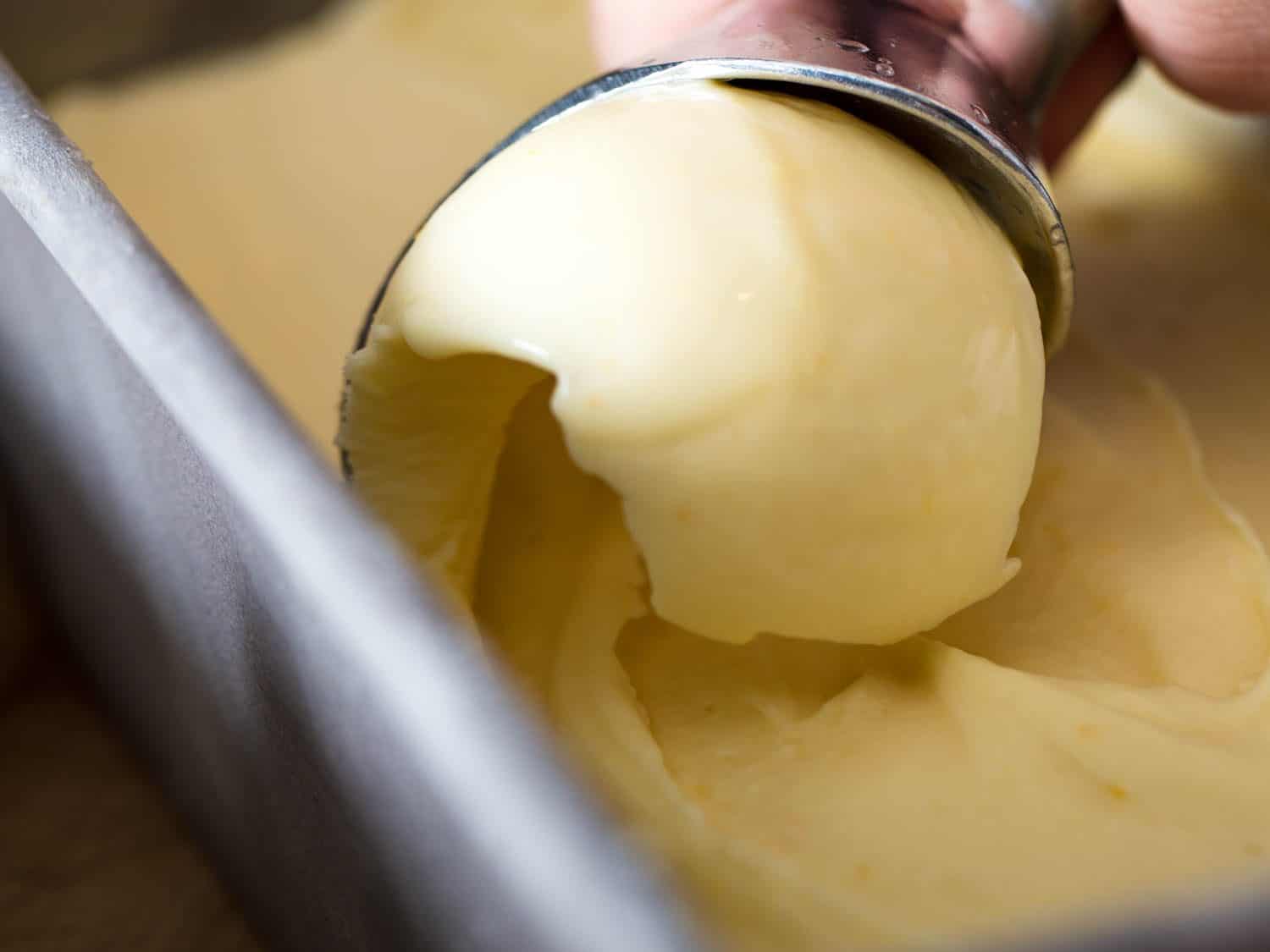
[Photographs: Vicky Wasik]
“That ice cream was like eating a frozen lemon meringue pie!”
When that text popped up on my phone, I knew my father had found the stash of ice cream I’d left in his freezer, and that my mission was a success. Lemon meringue pie is his favorite dessert, second only to ice cream, so I had wanted to surprise him with a mash-up for quite some time.
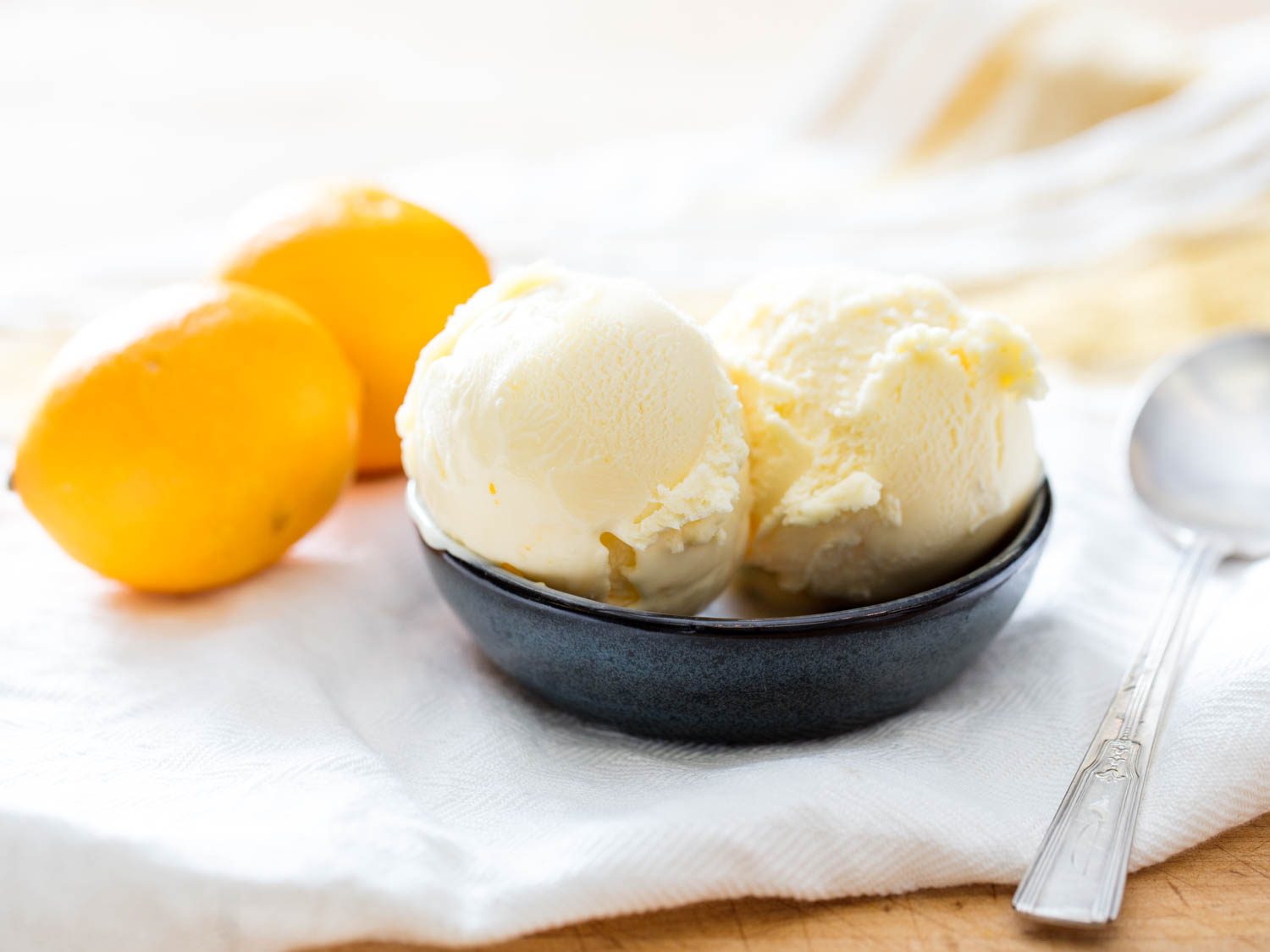
My initial tests, with classic supermarket lemons, were almost painfully sour. So when thin-skinned Meyer lemons started showing up, I knew I’d found my solution to the ice cream of his dreams. Compared to the lemons we get all year round, Meyer lemons have an undeniable sweetness behind their gentle bite, and a more floral aroma. For that reason, they can be a little lackluster in recipes that need a strong dose of acidity to cut through lots of sugar and fat—for me, Meyer lemons can be a little cloying in lemon bars and curd.
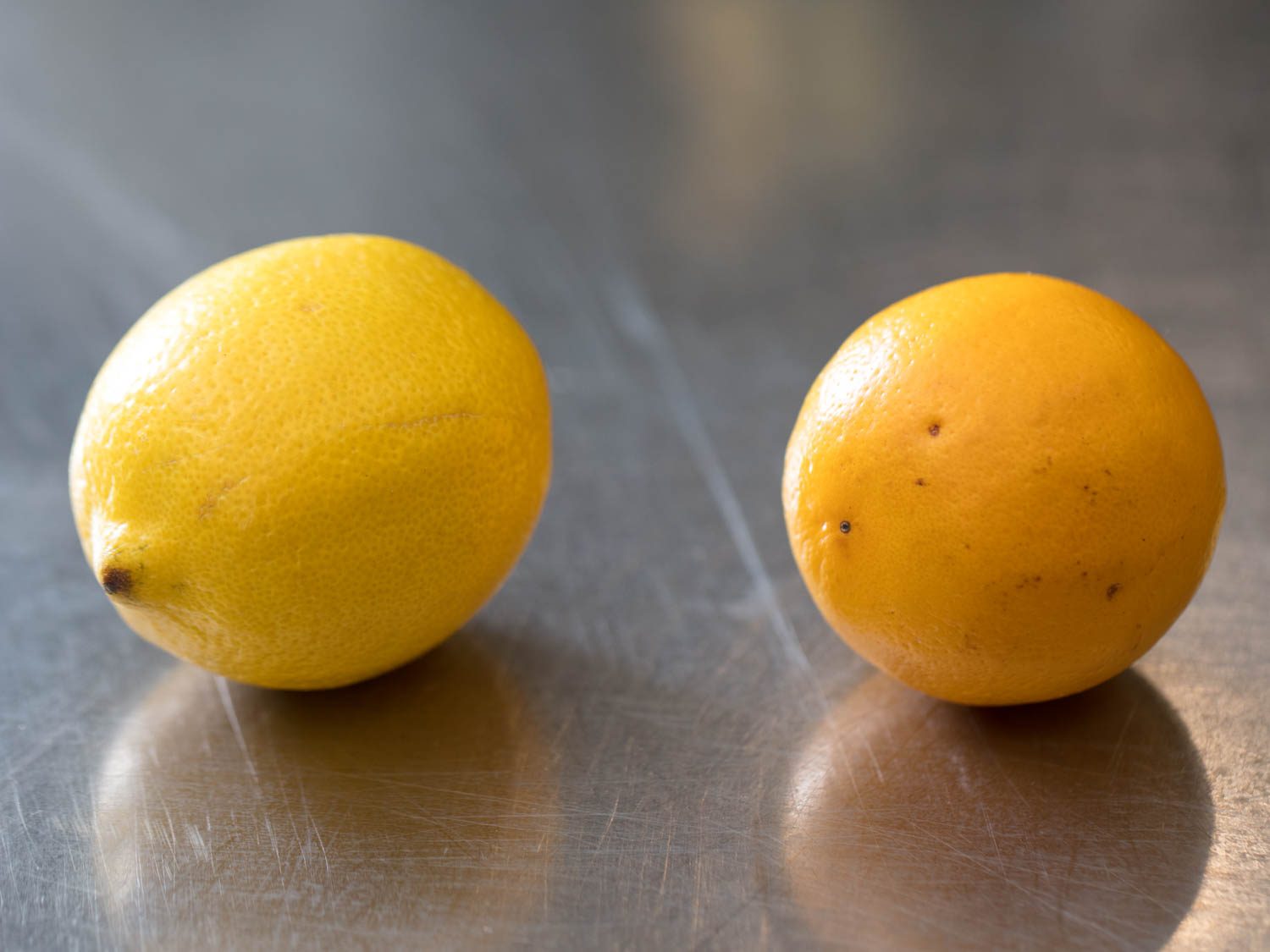
[On the left, a classic supermarket lemon. On the right, a Meyer lemon.]
But their sweet and floral acidity was perfect for ice cream, giving it a beautiful flavor and tang, while the essential oil in their zest upped the lemon flavor and aroma without affecting the acidity. Used together, Meyer lemon zest and juice make for a bright and tangy ice cream that’s surprisingly light and refreshing.
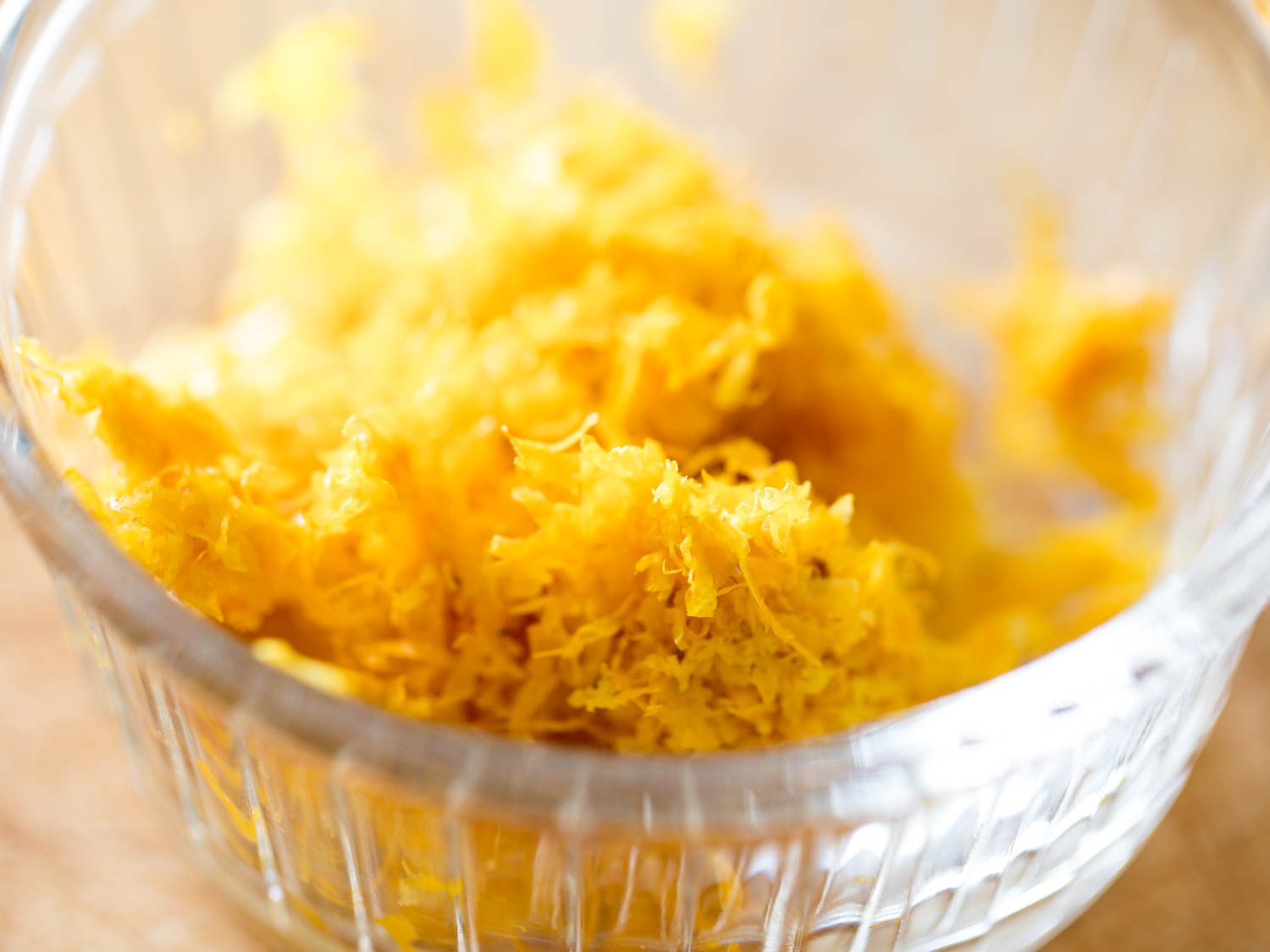
My approach to this ice cream isn’t exactly traditional, but it’s easy as pie—quite literally, as the formula’s based on the filling of my creamy lime pie. It makes for a fairly lean but super-intense foundation; nothing but sugar, cornstarch, whole eggs, and Meyer lemon juice and zest.
Cornstarch in ice cream is nothing new; it helps create a thick and creamy base in an eggless formula, or in this case, a low-egg formula. With only two whole eggs, rather than the equivalent weight of yolks, this ice cream has a leaner, more refreshing profile. Meanwhile, the cornstarch picks up the slack, keeping the ice cream silky smooth and giving it the pleasant chewiness I associate with some styles of gelato.
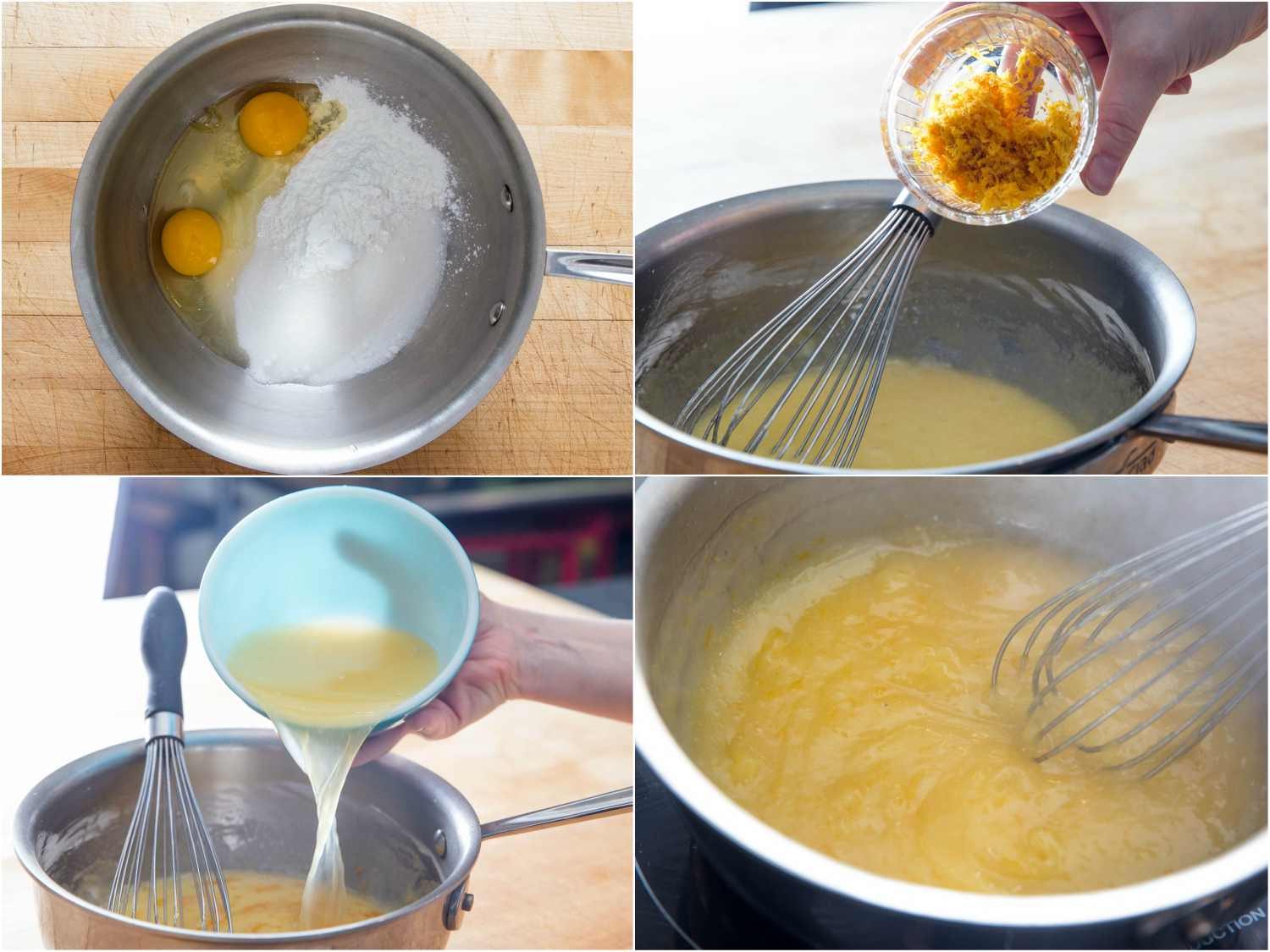
As with my lime pie, I start by cooking the custard over medium-low heat until warm to the touch, then I bump it up to medium. Along the way, I whisk constantly but gently to keep the thick custard moving. Once it starts to bubble, I continue cooking and whisking about 30 seconds longer (this helps me avoid problems related to a starch-dissolving enzyme found in egg yolks, which could otherwise turn the ice cream base soupy and thin).
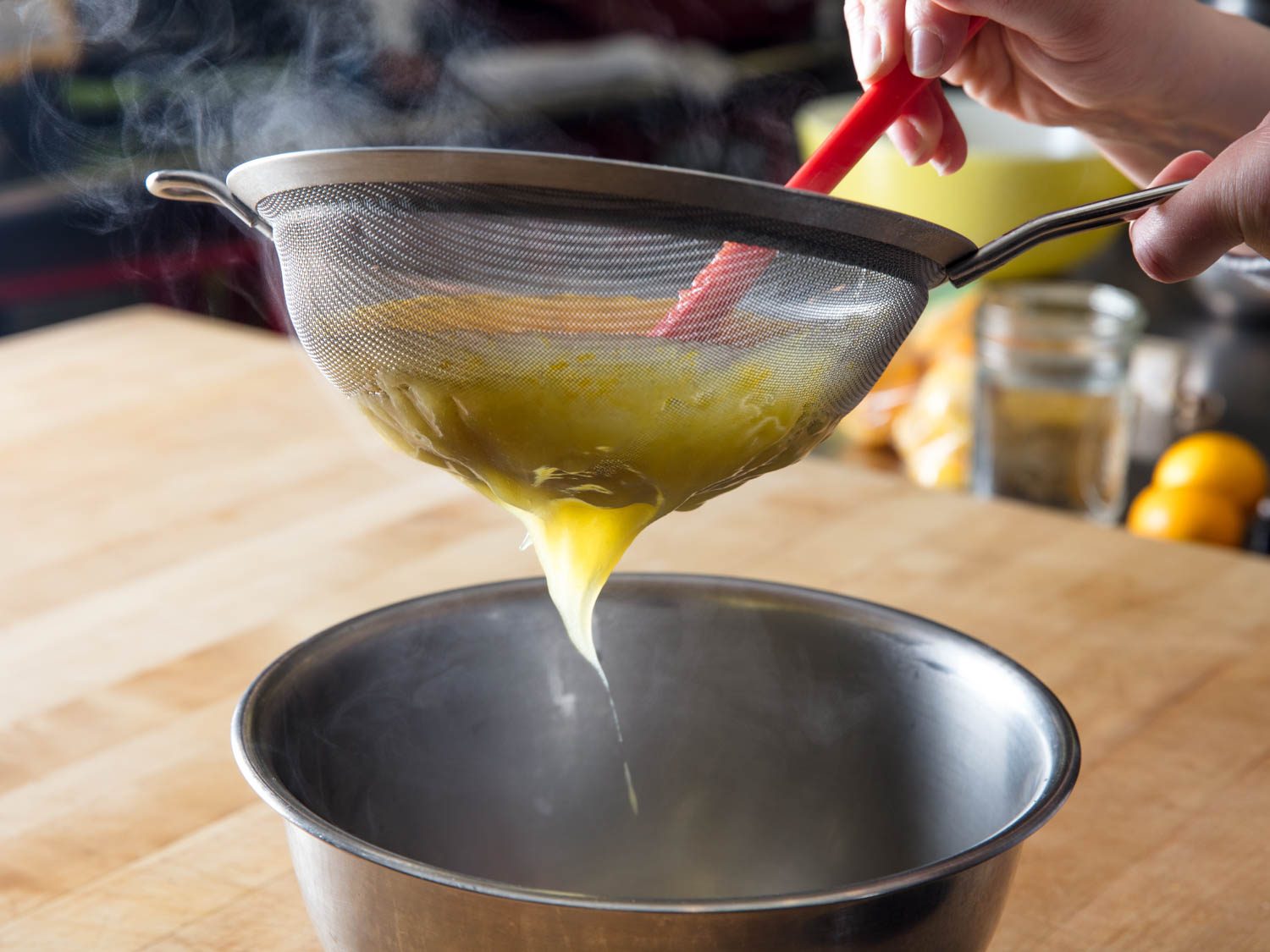
Next, I strain the base through a non-reactive sieve to remove the zest, which would otherwise form a congested knot between the paddle attachment and the bowl during the churning process. The act of straining also kickstarts the cooling phase, which I speed along with the addition of heavy cream straight from the fridge.
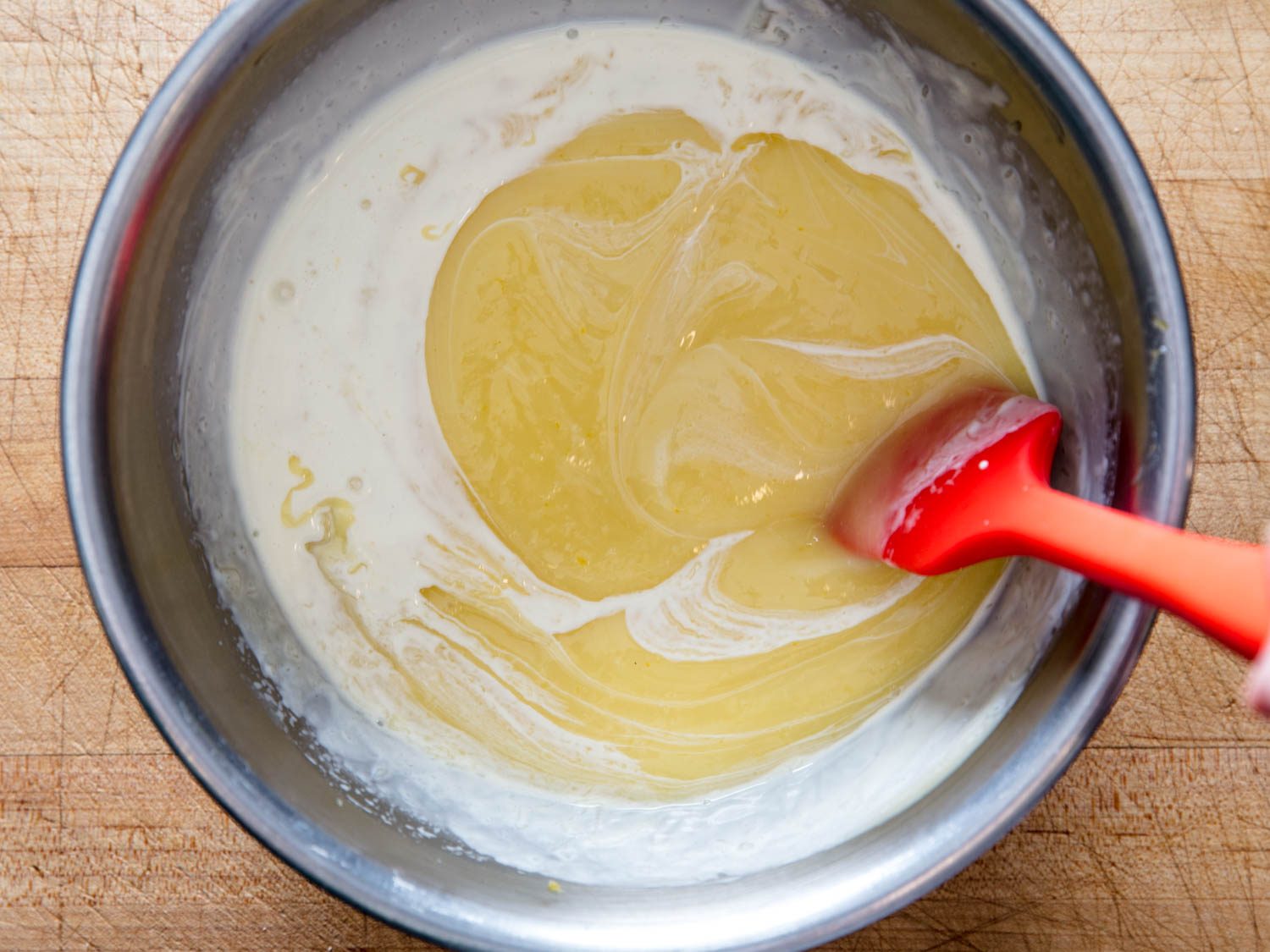
To play up the subtle orange notes associated with Meyer lemon (said to be a cross between a lemon and a mandarin), I also stir in a splash of curaçao, but any citrus liqueur will do—or none at all! It’s an added bonus to flavor and texture, not a requirement.
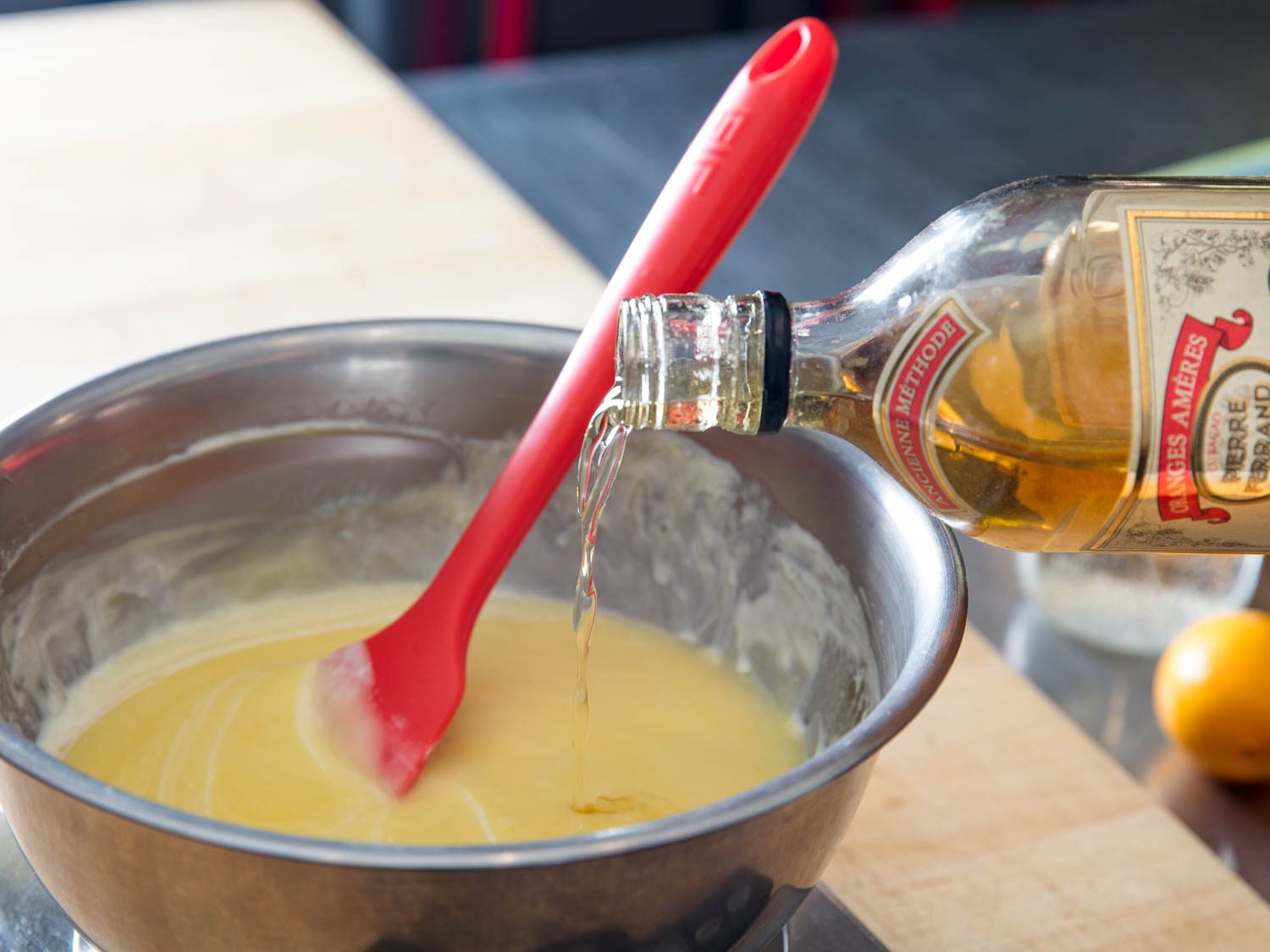
The ice cream base can be cooled passively in the fridge, or proactively in an ice bath. Either way, the goal is to bring it down to about 39°F before churning. As my friend Max Falkowitz has explained before, ice cream doesn’t need to be chilled overnight. There are some marginal gains to be had, particularly when churning in bulk, but none that are make-or-break for small batches at home.
What’s far more important is that the freezer itself is set to 0°F (-18°C), or else the ice cream canister won’t be cold enough to churn properly in the machine, leading to a dense and gooey sort of ice cream rather than one that gains volume as it churns.
Transfer the ice cream to a well-chilled container (I have this one from Tovolo at home) or a non-reactive loaf pan (but beware, most are made from aluminized steel which can lead to some metallic flavors in the ice cream where it touches the pan). The ice cream can be immediately enjoyed as soft serve, or covered and frozen until firm enough to scoop. The time needed can vary dramatically depending on the container’s ratio of volume to surface area, but four hours is a safe start.
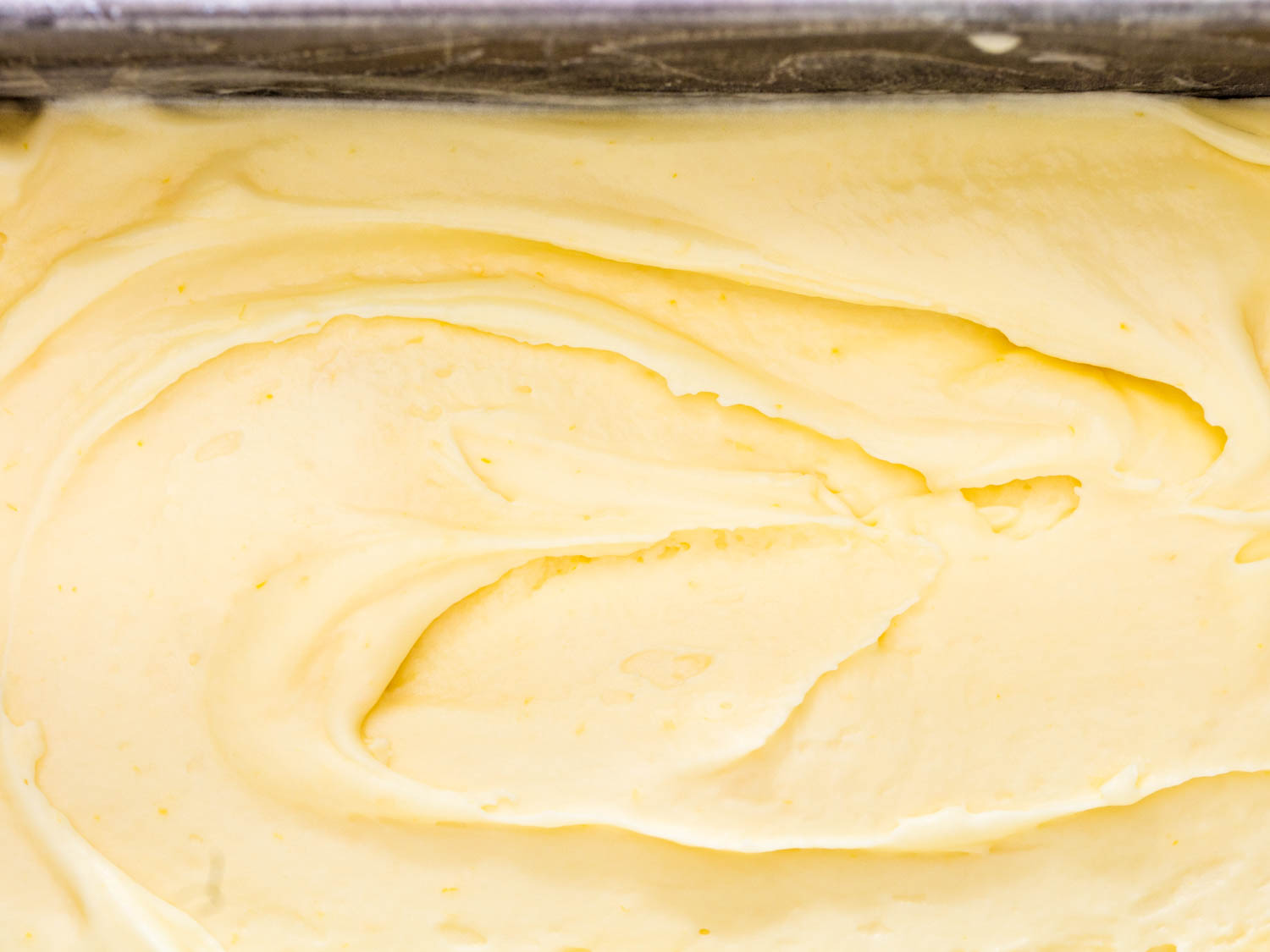
By itself, the ice cream tastes like a scoop of lemon meringue pie, sweet and sour and creamy and cold. The cream softens the already mellow acidity of Meyer lemons, making the ice cream into something that’s tart but gentle, easy to savor as it melts on your tongue.
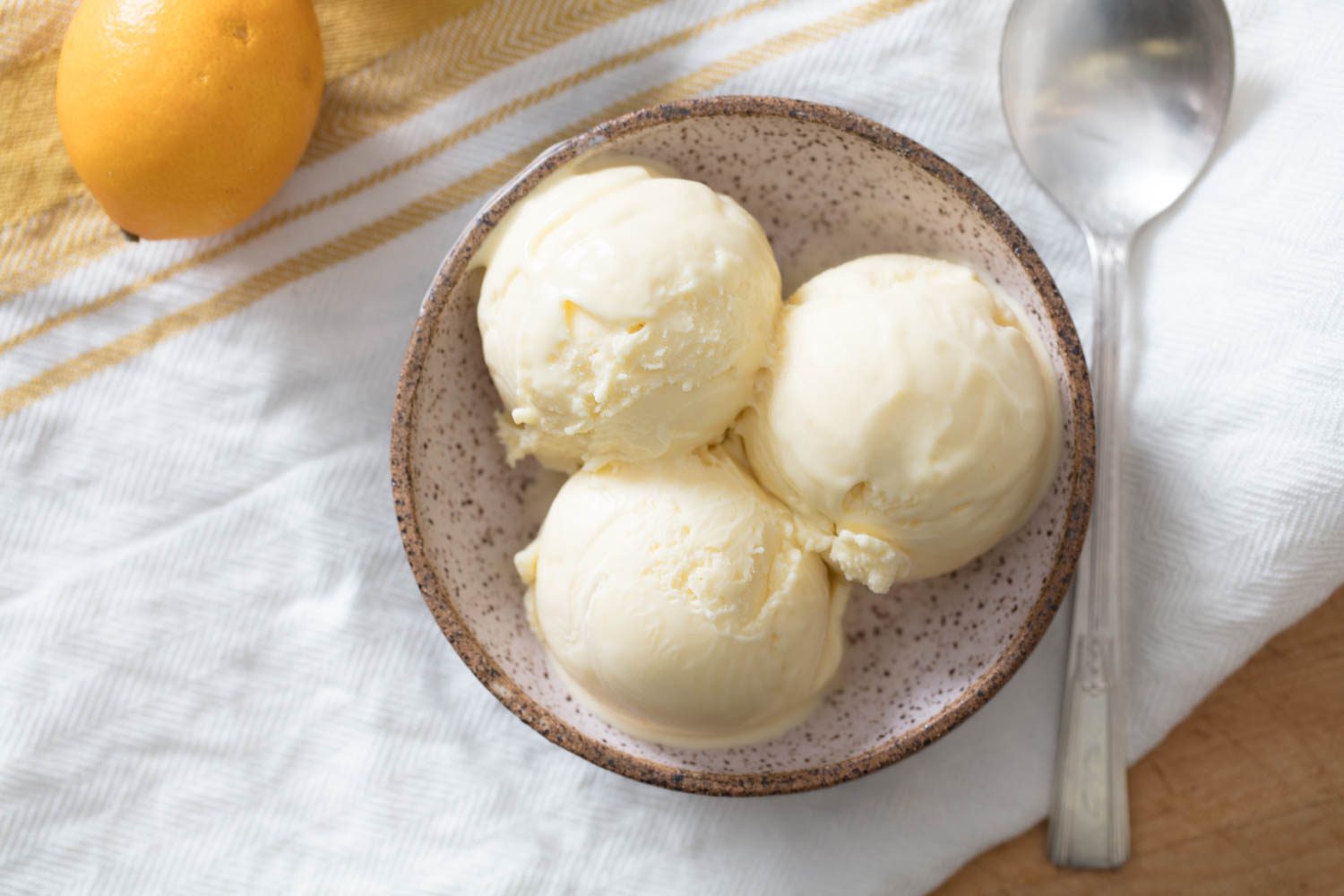
It’s absolutely perfect all on its own, but if you want something truly over the top, try pairing the ice cream with a spoonful of roasted strawberries, still warm from the oven. It’s like a fruity affogato, with hot strawberry syrup standing in for the espresso, melting the ice cream into creamy swirls.
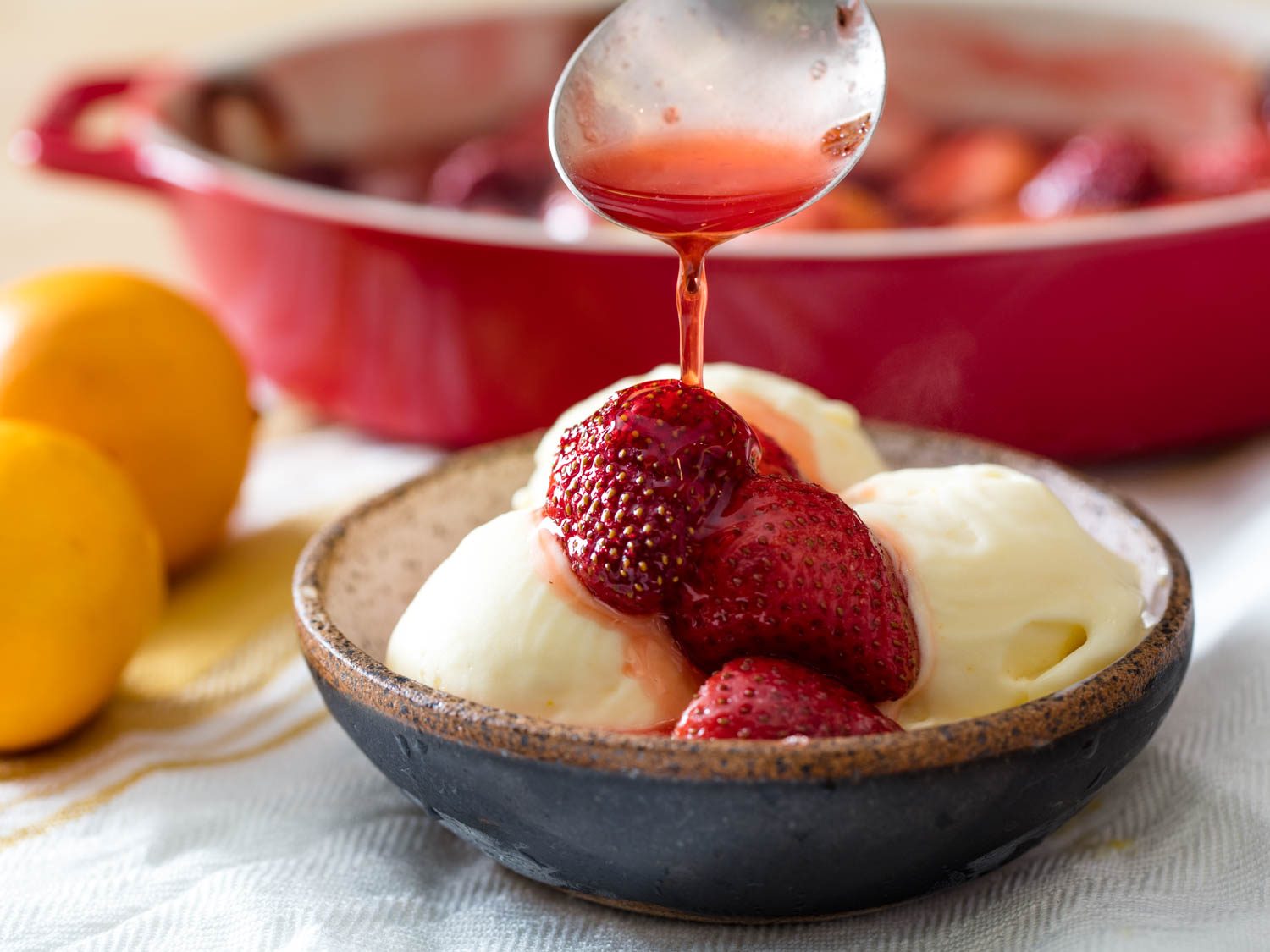
With or without the warm strawberries, if you make this ice cream at home, be sure to save the juiced and zested lemons for a batch of no-cook lemon syrup. It’s a low-effort way to get the most out of pricey Meyer lemons, and a delicious topping for everything from waffles to French toast, as well as an ingredient in recipes like lemon poppy seed dressing, candied pistachios, and lemon chantilly. It’s like a buy-one-get-one-free deal for dessert.
Source link